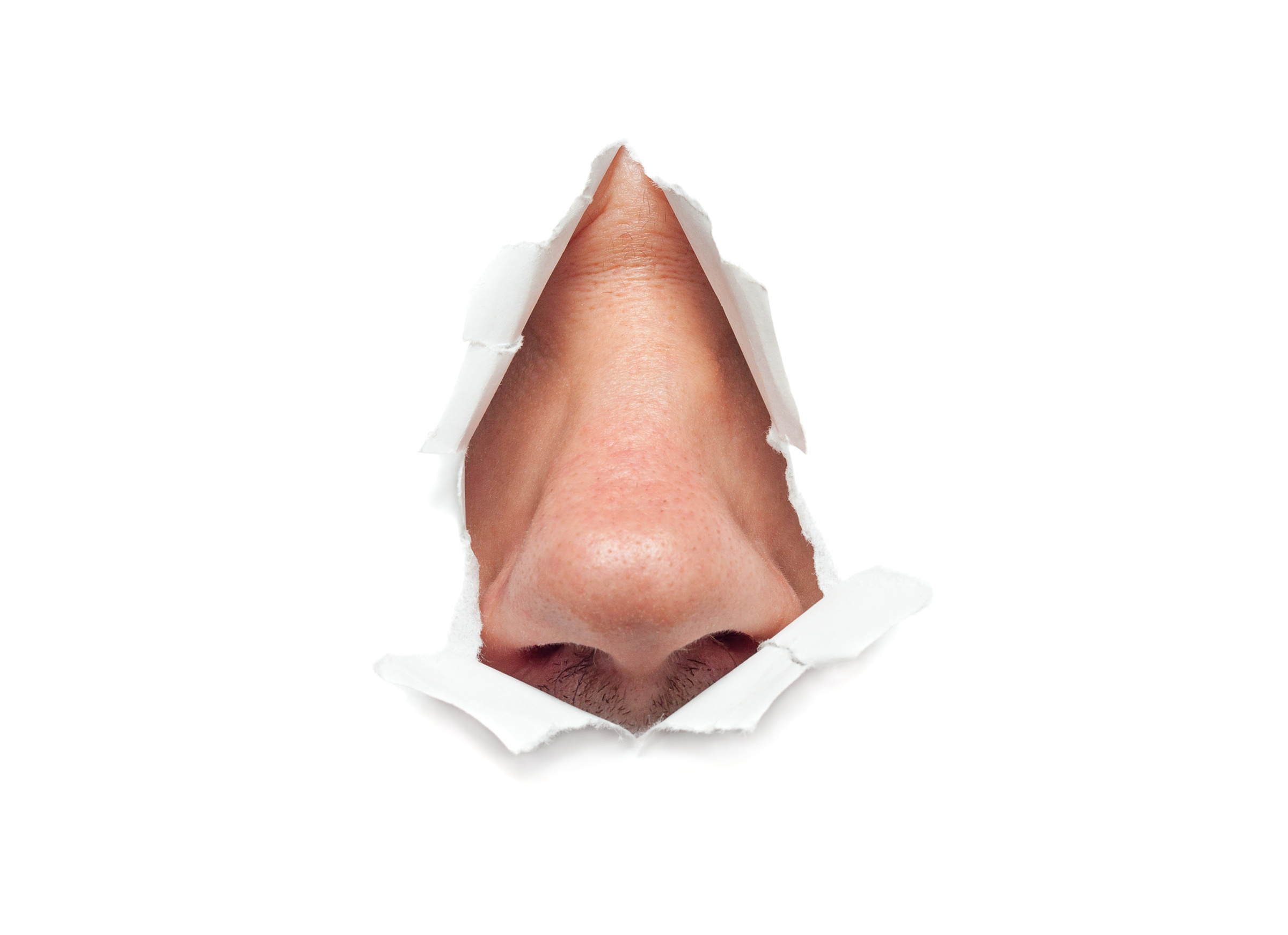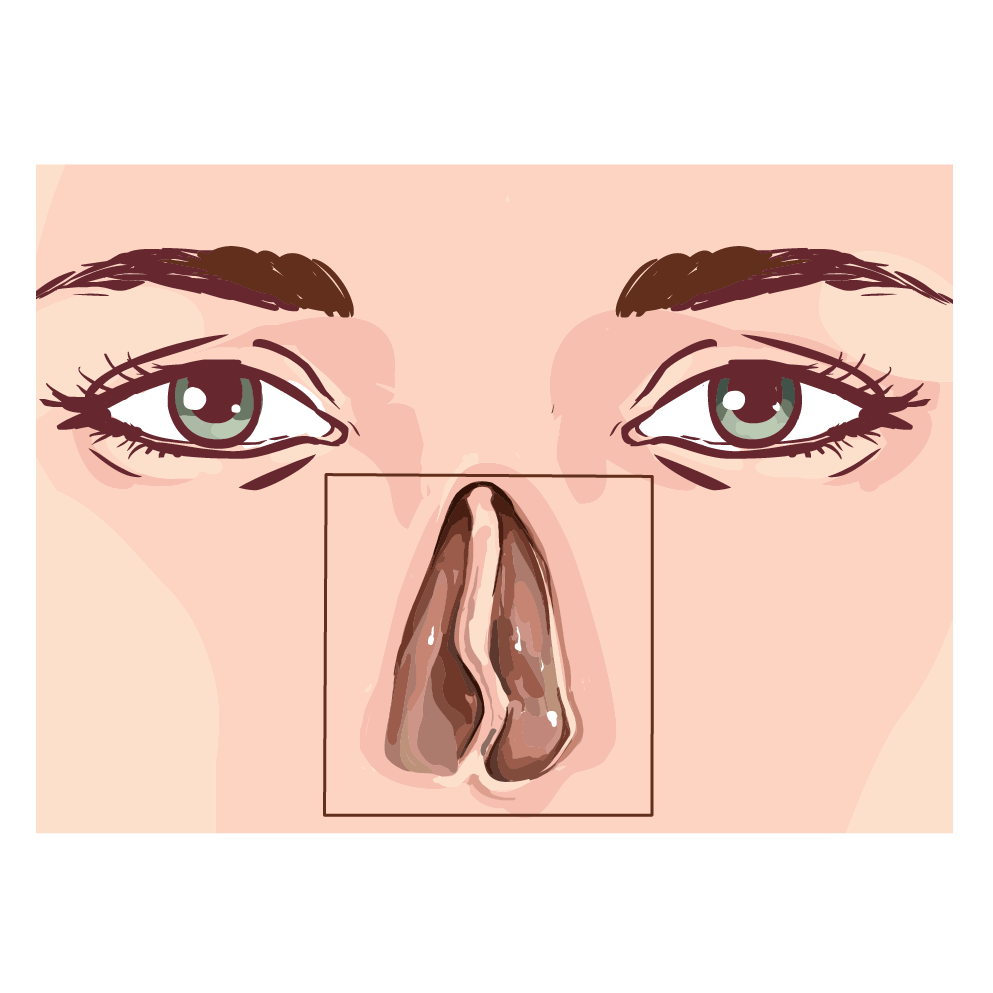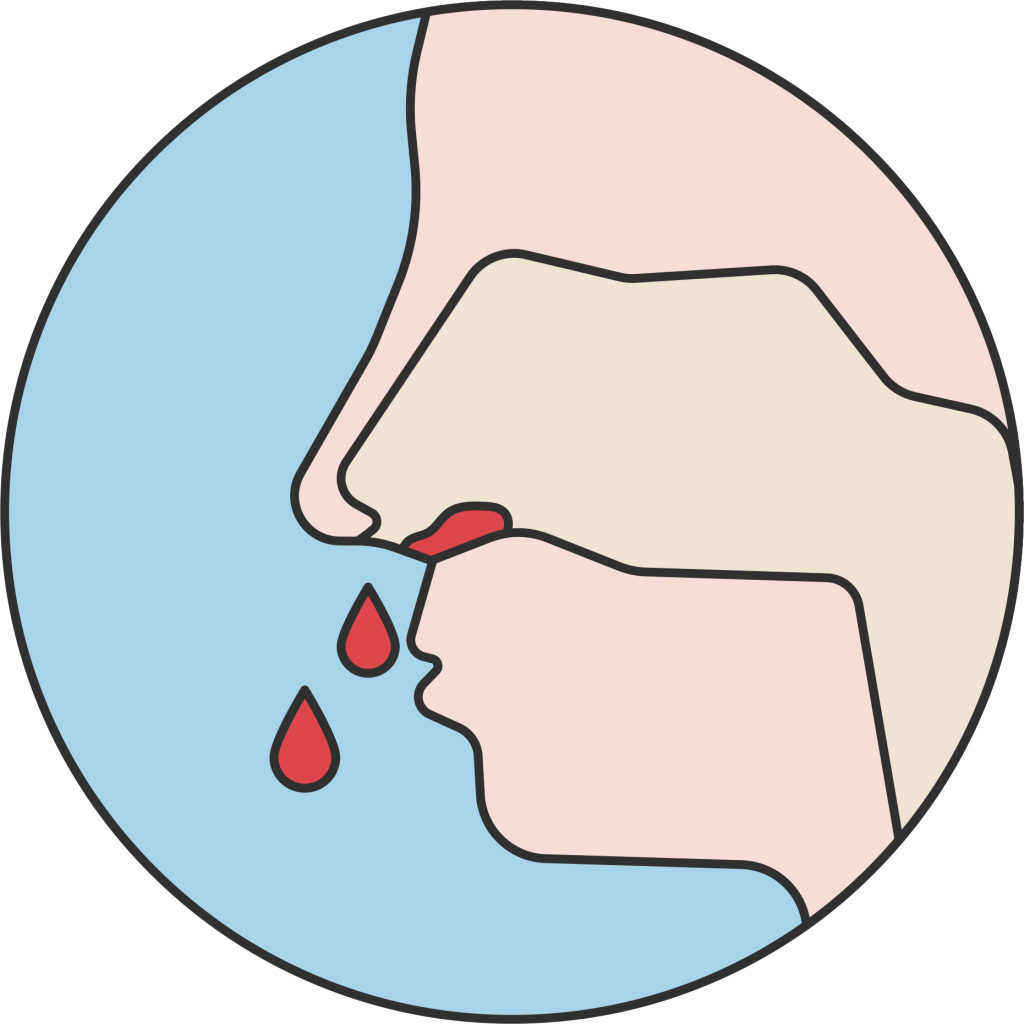ENT – Nose
General information on nasal breathing obstructions

Nasal septum deviation
Nasal septum
deviation
Approximately 60-80% of people have a crooked nasal septum. This means that the cartilaginous (anterior) and/or bony (posterior) part of the nasal septum grows laterally instead of standing vertically and centrally. Over time, the curvature can increasingly obstruct nasal breathing. Since the curvature develops slowly and mostly in childhood and adolescence, usually due to growth disorders caused by blows or falls on the nose, the resulting nasal breathing obstruction is not always noticed. Rather, the consequences are perceived: snoring, ear pressure, frequent sinus infections, or a cold.
Do all crooked nasal septums have to be operated on? NO, only if it causes permanent discomfort!


Chronic and acute inflammation of the sinuses
The sinuses are usually not directly examinable because they are hidden in our bones. An undiscovered inflammation can have many, mostly unpleasant and quality of life-reducing, but sometimes even serious consequences, so a timely diagnosis and therapy is very important! An endoscopic examination and CT (computed tomography) of the sinuses is often unavoidable, but provides immediate answers to our questions.
Allergy (inhalant)
In the ENT practice, we perform a PRICK test for inhalative (inhaled) allergens, but no tests for e.g. food or cosmetics (this is the task of the dermatologists). In a PRICK TEST, various allergens are applied to the skin of the forearm (I use a pleasant “stamp system” so that even children can be tested without any problems! Don’t worry, I don’t prick! 🙂

Hyposensitizations against allergies
In the case of severe allergic complaints, where the usual cortisone nasal sprays and antihistamines do not help, or only help for a short time, it is recommended to carry out an SIT (Specific Immunotherapy). This can significantly alleviate the allergic complaints and prevent the so-called allergy career and change of floors. Change of floors means that an untreated allergy with “only” nasal symptoms can spread over the years to the deeper floor, namely to the lungs, and an allergic asthma can develop.
The desensitization therapy (SIT) lasts 2-3 years, and can be completed in the form of subcutaneous injections but also as a spray therapy, which is sprayed under the tongue.

Nasal spray abuse (Privinism)
It’s so annoying when our nose is constantly blocked! As soon as you lie in bed, you have to gasp for air with your mouth open, and your throat dries out. If it happens during sleep, there is also a strange snoring noise! What can you do now???? Reach for the nasal spray!!!!! Hooray! It helps! – for a short time…then everything starts all over again. The nights are no longer restful and a nice amount of money is invested in nasal sprays and goes up in smoke.
If you recognize yourself in this story, you should come in for an examination. Because there is help, even very quick help!
nosebleeds
Do you suffer from frequent nosebleeds? Have your nose examined, there is usually a good conservative therapy for it, or the vessel can be sealed. You should carefully monitor your blood pressure values beforehand and bring the latest laboratory values (if available) from your family doctor!
Immediate help: In the event of a nosebleed, pinch the nose firmly together at the bottom of the nostril and lean forward, place an ice tie or something cold on the neck, and stay like this for at least 5 minutes! Please spit out the blood, do not swallow it!

Smell / taste disorders
In the background of smell and taste disorders, many causes can lie. A careful anamnesis and examination is required to get to the bottom of it. Nowadays we all know that a COVID-19 infection can also be accompanied by a loss of smell and taste.
Snoring
Snoring makes life equally difficult for snorers and bed partners. Sometimes it is “only” annoying, but sometimes there are breathing pauses in the background, which need to be clarified and treated quickly.
An endoscopic examination of the nose and throat is carried out, if necessary a polygraphy (sleep screening), which can even be completed at home, in your own bed, is recommended. If the polygraphy shows values that are too high for the apnea-hypopnea index (AHI) or other anomalies, the patient is sent to a large sleep laboratory for further examinations. But if the values are in the normal range, and there is only a disturbing snoring noise, this can be “processed” with the usual ENT methods, with medication or surgery.
